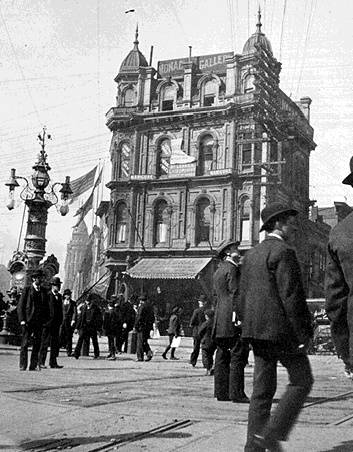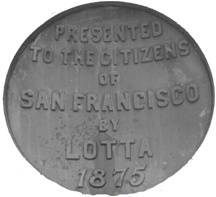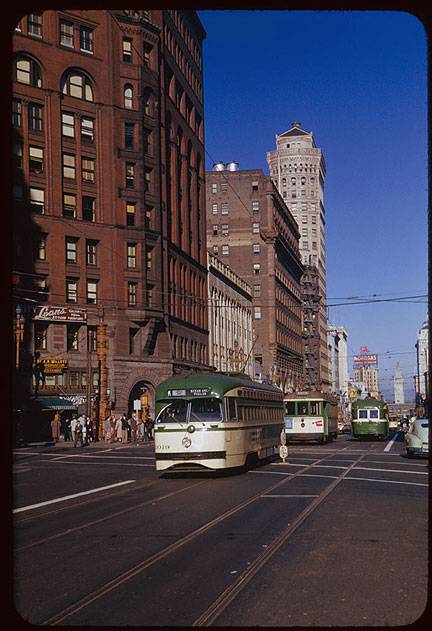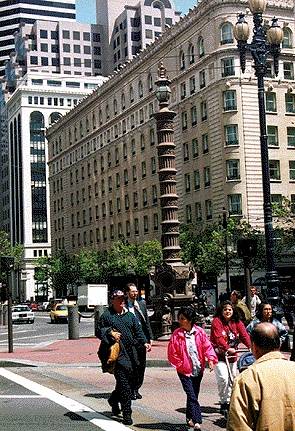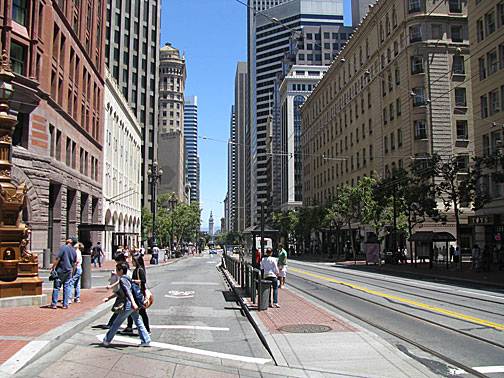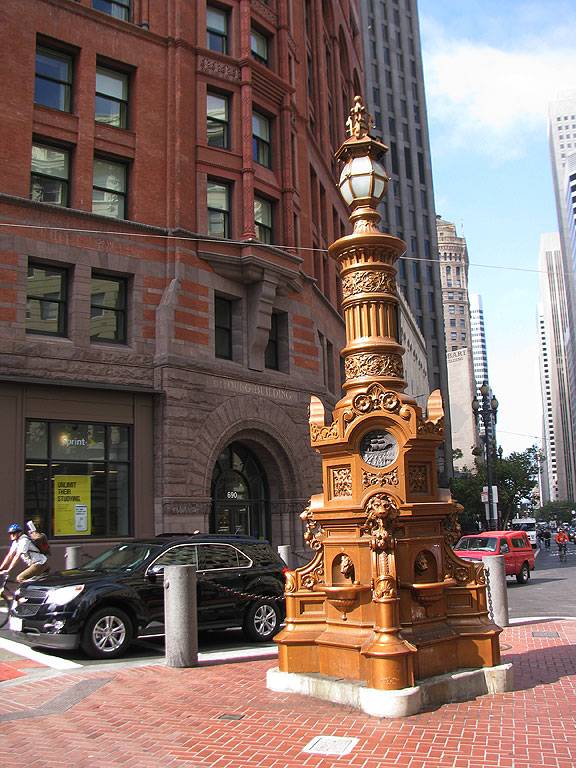Lotta's Fountain
Historical Essay
by Dr. Weirde
Photographer J.B. Monaco's studio at Kearny and Market in 1894, Lotta's Fountain at left.
Photo: J.B. Monaco
Dedication to Lotta's Fountain at Geary and Market.
Photo: Chris Carlsson
Looking down Market Street from 3rd, next to Lotta's Fountain, January 30, 1953.
Photo: Charles Cushman Collection: Indiana University Archives (P06546)
Lotta's Fountain at Geary and Market 1996
Photo: Chris Carlsson
Lotta's Fountain, in the pedestrian island, northeast corner of Geary, Market and Kearny Streets. Lotta Crabtree spent years quenching the City's thirst for entertainment, but her fountain isn't doing much for the parched San Franciscans who pass by her Memorial Drinking Fountain. In fact, it's a small miracle that Lotta's Fountain still stands, after suffering decades of verbal abuse from humans and more graphic criticism from pigeons. Samuel Dickson wrote in 1947 that San Franciscans consider the fountain "not only an unaesthetic monstrosity but the ugliest monument in the city." Dickson himself considered it "a pile of painted bronze, without beauty or charm, an ungraceful thing with scraps of newspaper and street sweepings usually heaped at its base, and pigeons or gulls perched on its uninspiring cap." But every time somebody suggests tearing it down for scrap, someone else piously invokes the hallowed memory of Lotta Crabtree.
Looking East down Market Street from 3rd, next to Lotta's Fountain, 2007.
Photo: Chris Carlsson
Lotta's Fountain with its new coat of paint and the restored facade of the DeYoung Chronicle building behind, 2013.
Photo: Chris Carlsson
So just who the hell was Lotta Crabtree? The daughter of a utopian dreamer who failed at one grandiose scheme after another, Lotta arrived in San Francisco in 1853, at the tender age of six. Her mother, Mary Ann, was one of the very few women in Gold Rush-era San Francisco, and Lotta one of the even fewer children, so the pair attracted attention wherever they went. Lotta became something of a ham. The next year, Lotta wound up under the tutelage of the most scandalous women in California, Lola Montez, whose wide-ranging promiscuity had favored royalty, hommes de lettres, and a number of lesser rogues and drifters, until the outraged women of San Francisco drove her out, forcing her to live in Grass Valley under a pseudonym, "The Countess Landsfield." At the age of eight, Lotta began dancing for the entertainment-starved miners of Rabbit Creek. Her mother proceeded to abscond with her, and with a young Italian entertainer named Mart Taylor. The threesome played in saloons, gambling houses, and lowlife dives throughout Northern California. Lotta developed a song-and-comedy routine to go with her dancing, and soon became California's most revered entertainer during a career that spanned several decades. She lived a wild life, never married, survived to the age of seventy-seven, and left a fortune of four million dollars. And a fountain.

